Guilt-Free Low Carb Keto Apple Pie Recipe
Low carb keto apple pie transforms a classic dessert into a smart, satisfying alternative for health-conscious sweet lovers.
Nostalgic flavors dance through every carefully crafted bite of this ingenious recipe.
The clever culinary approach reimagines traditional dessert expectations with strategic ingredient swaps.
Passionate bakers can now indulge their pie cravings without compromising nutritional goals or taste preferences.
Innovative techniques ensure a rich, comforting experience that feels simultaneously familiar and exciting.
Delicate spices and carefully selected ingredients create a remarkable dessert that defies conventional dietary restrictions.
Prepare to experience a remarkable reinvention of a beloved classic that will leave you craving more:
Why You’ll Love This Keto Take on Apple Pie
Apple Pie Ingredients—Reimagined for Keto
Main Ingredients for Filling:
Squash: A low-carb substitute for apples, perfect for mimicking apple pie texture and providing a neutral base flavor.
Lemon Juice: Adds brightness and helps soften the squash while providing necessary acidity.
Sweeteners and Spices:Pie Crust Components:Supporting Ingredients:How to Make a Keto Apple Pie That Tastes Like Fall
Step 1: Prepare Gelatin Fusion
Grab a small bowl and whisk gelatin powder with lemon juice. Let the mixture sit and transform into a thick gel-like substance.
Step 2: Create Magical Filling
In a large saucepan, melt butter over medium heat. Add these ingredients:Whisk in the gelatin mixture until completely dissolved.
Step 3: Transform Squash Chunks
Toss diced squash into the pan and bring to a gentle simmer. Cook for 30-40 minutes until squash becomes soft and resembles classic apple pie filling.
Step 4: Enhance With Flavor Boosters
Stir in vanilla and maple extracts. Let the mixture cool down to lukewarm temperature.
Step 5: Warm Up The Oven
Preheat oven to 350°F / 180°C.
Step 6: Craft Perfectly Smooth Crust Dough
In a mixing bowl, combine:Blend in:Use a hand mixer to create a uniform dough.
Step 7: Shape Bottom Crust Layer
Divide dough into two portions. Press half into a lined pie pan, covering bottom and sides completely.
Step 8: Pre-Bake Crust Foundation
Bake for 10-12 minutes until golden. Allow to cool for at least 10 minutes.
Step 9: Design Elegant Top Crust
Place remaining dough between two lightly oiled parchment papers. Roll into a circle slightly larger than pie pan.
Step 10: Build Delicious Layers
Ensure filling and crust are lukewarm. Pour filling into cooled bottom crust.
Step 11: Crown With Top Crust
Carefully transfer rolled dough using parchment paper. Remove top paper, trim edges, and seal. Create 4 decorative slits.
Step 12: Final Baking Performance
Bake 20-25 minutes until edges turn golden. Cover edges with foil, continue baking 5-15 minutes until top looks light and firm.
Step 13: Patient Cooling Ritual
Remove from oven and let pie cool completely before slicing or removing from pan.
Tips for Nailing a Low Carb Pie Crust
Best Practices for Storing Keto Apple Pie
Sweet and Spiced Variations on the Keto Apple Pie
Finishing Off with the Ultimate Keto Pie
Keto apple pie masterpieces emerge from culinary creativity, transforming squash into a nostalgic dessert miracle.
Innovative bakers discover low-carb magic without sacrificing traditional flavors.
Passionate home chefs can recreate this guilt-free classic with simple ingredients and precise techniques.
Delightful aromas will fill kitchens, promising a delectable experience that challenges conventional dessert expectations.
Scientific precision meets comfort food in this remarkable recipe.
Bon appétit, adventurous souls – share this revolutionary recipe, comment with your twists, and spread keto dessert love across digital platforms!
Print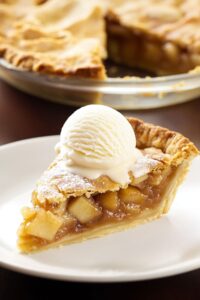
Low Carb Keto Apple Pie Recipe
- Total Time: 1 hour 25 minutes
- Yield: 8 1x
Description
Keto apple pie delivers classic dessert magic without sugar or carbs. Clever zucchini slices and warm cinnamon spices create a guilt-free indulgence you’ll savor with pure delight.
Ingredients
Filling Ingredients:
- 5 medium yellow squash (~6–7 cups, ~1.4 kilograms, peeled, sliced, and diced into 1.25 centimeters / 0.5 inches pieces; or use zucchini)
- 90 milliliters / 6 tablespoons lemon juice (divided)
- 115 grams / 0.5 cup unsalted butter
- 30 grams / 0.25 cup powdered monk fruit allulose blend (or more to taste)
Spice Ingredients:
- 2 teaspoons ground cinnamon
- 1 teaspoon ground nutmeg
- 0.5 teaspoon ground cardamom
- 1 teaspoon vanilla extract (optional)
- 0.5 teaspoon maple extract (optional)
Crust Ingredients:
- 375 grams / 3.75 cups blanched almond flour
- 40 grams / 0.33 cup monk fruit allulose blend
- 0.5 teaspoon sea salt
- 115 grams / 0.5 cup unsalted butter (measured solid, then melted)
- 1 large egg
- 0.5 teaspoon vanilla extract (optional)
- 1 tablespoon unflavored gelatin powder
- 2 tablespoons water
- 1 tablespoon unflavored gelatin powder
Instructions
- Create a gelatin base by whisking gelatin powder with of lemon juice, allowing it to bloom and develop a thick consistency.
- In a large saucepan (3.5-quart / 3.3 liters), melt butter over medium heat. Incorporate powdered sweetener, remaining lemon juice, and warm spices like cinnamon, nutmeg, and cardamom.
- Integrate the bloomed gelatin into the spice mixture, whisking thoroughly until completely dissolved and smooth.
- Introduce diced squash into the pan, bringing the mixture to a gentle simmer. Cook for 30-40 minutes, stirring occasionally, until the squash transforms into a soft, thick compote reminiscent of traditional apple pie filling.
- Enhance the filling with vanilla and maple extracts, then allow the mixture to cool to lukewarm temperature, approximately 20 minutes.
- Preheat the oven to 180 degrees Celsius (350 degrees Fahrenheit), preparing for crust preparation.
- Combine almond flour, sweetener, and sea salt in a mixing bowl. Incorporate melted butter, egg, and vanilla extract.
- Add gelatin powder and water, using a hand mixer to create a uniform dough with consistent texture.
- Divide the dough into two equal portions. Press one half into a lined pie pan, ensuring complete coverage of bottom and sides.
- Bake the bottom crust for 10-12 minutes until achieving a light golden color. Allow to cool for minimum 10 minutes.
- Roll the remaining dough between two lightly oiled parchment papers, creating a circular shape slightly larger than the pie pan’s diameter.
- Verify that both filling and crust have cooled to lukewarm temperature before assembly.
- Carefully transfer the rolled dough onto the filled pie crust using parchment paper as a guide.
- Remove top parchment layer, trim excess edges, and seal the pie’s perimeter. Create four strategic slits in the top crust to allow steam escape.
- Bake the complete pie for 20-25 minutes until edges turn golden. Cover edges with aluminum foil and continue baking 5-15 minutes until top becomes light golden and slightly firm.
- Remove from oven and allow complete cooling before slicing or removing from pan, ensuring structural integrity.
Notes
- Swap zucchini or yellow squash strategically to create the most apple-like filling texture for your pie.
- Cool the squash mixture completely before filling the pie crust to maintain a crisp pastry base.
- Refrigerate pie dough briefly if it becomes too soft, ensuring smooth rolling and handling.
- Shield pie crust edges with aluminum foil midway through baking to prevent over-browning.
- Allow pie to rest and set at room temperature for minimum one hour before slicing for perfectly clean cuts.
- Prep Time: 20 minutes
- Cook Time: 1 hour 5 minutes
- Category: Desserts
- Method: Baking
- Cuisine: American
Nutrition
- Serving Size: 8
- Calories: 363
- Sugar: 3g
- Fat: 33g
- Saturated Fat: 10g
- Carbohydrates: 12g
- Fiber: 4g
- Protein: 10g
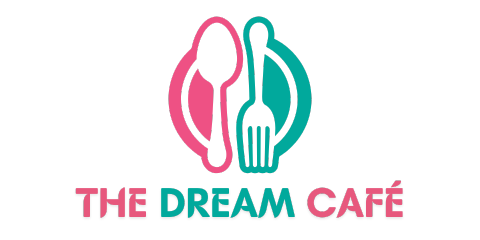
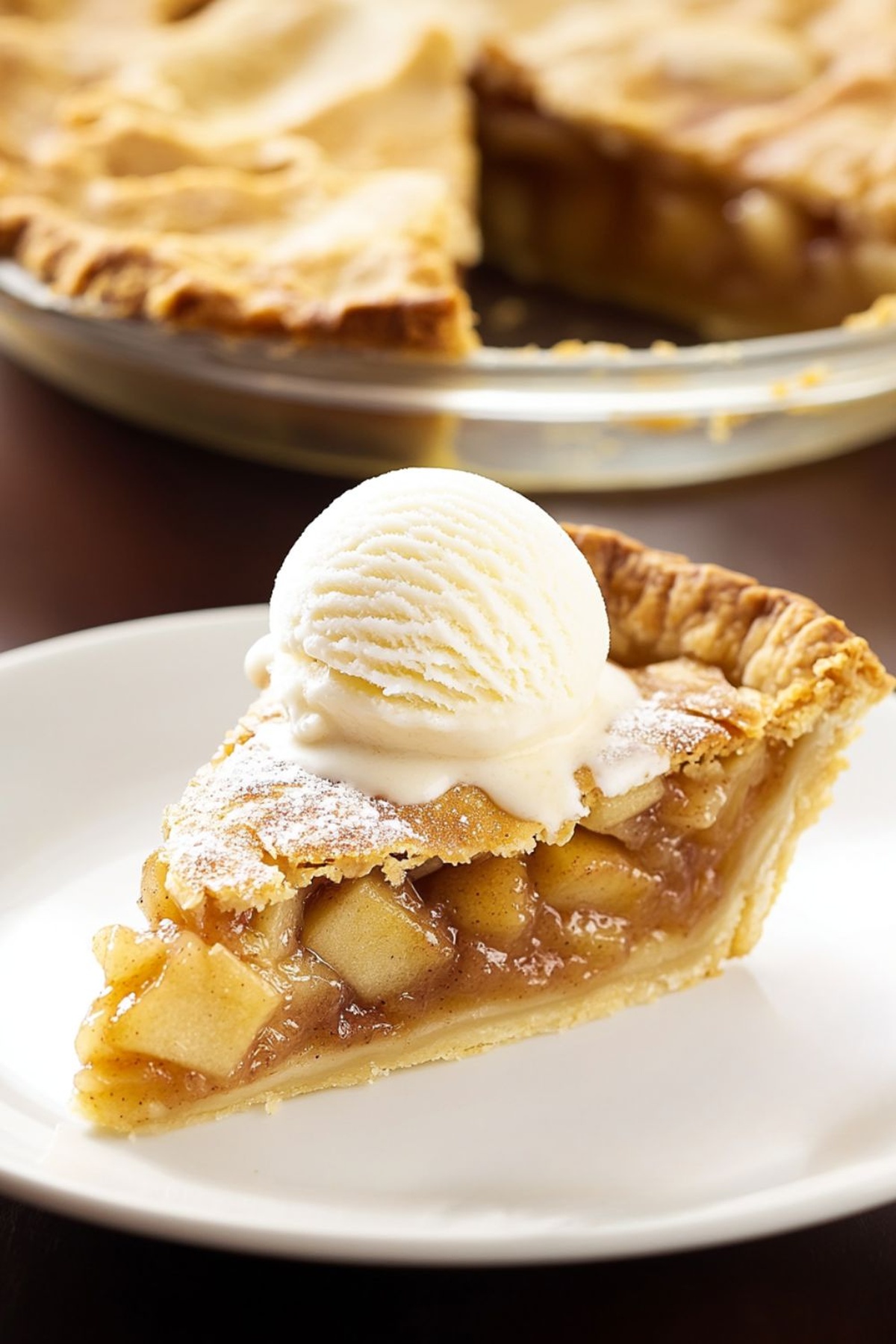
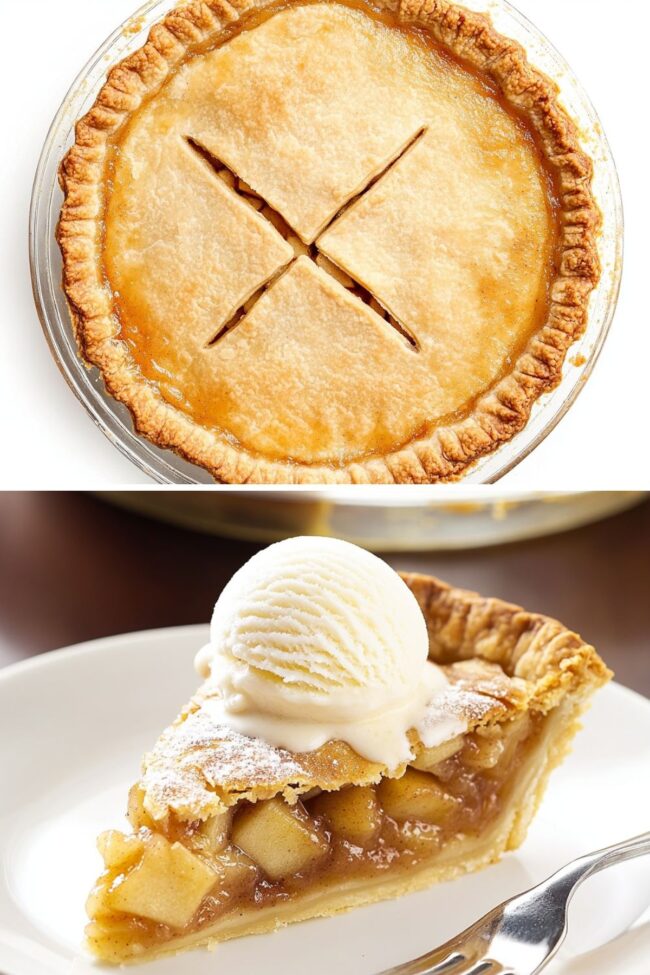
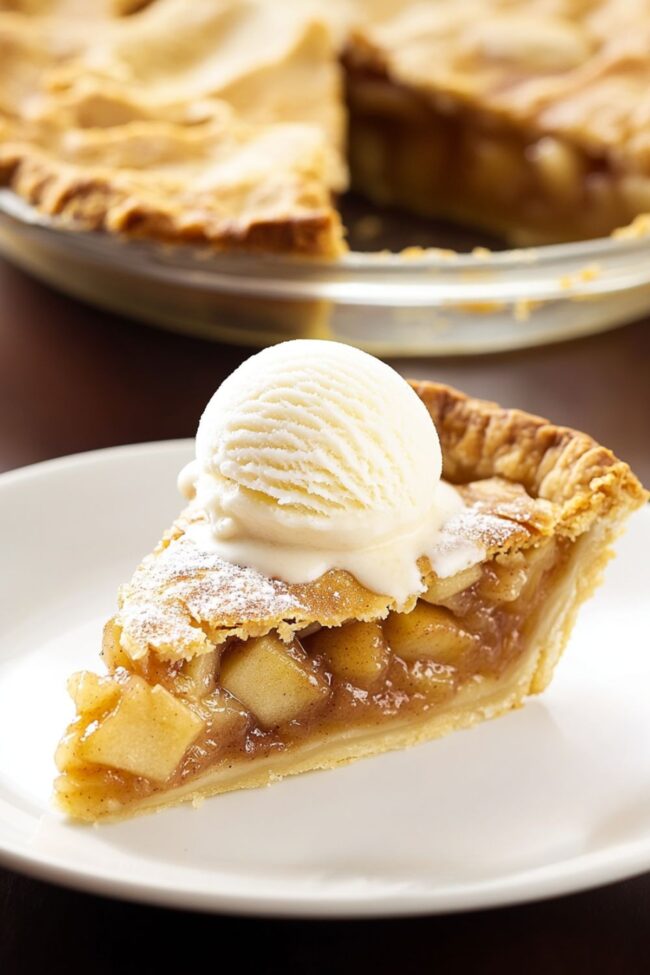
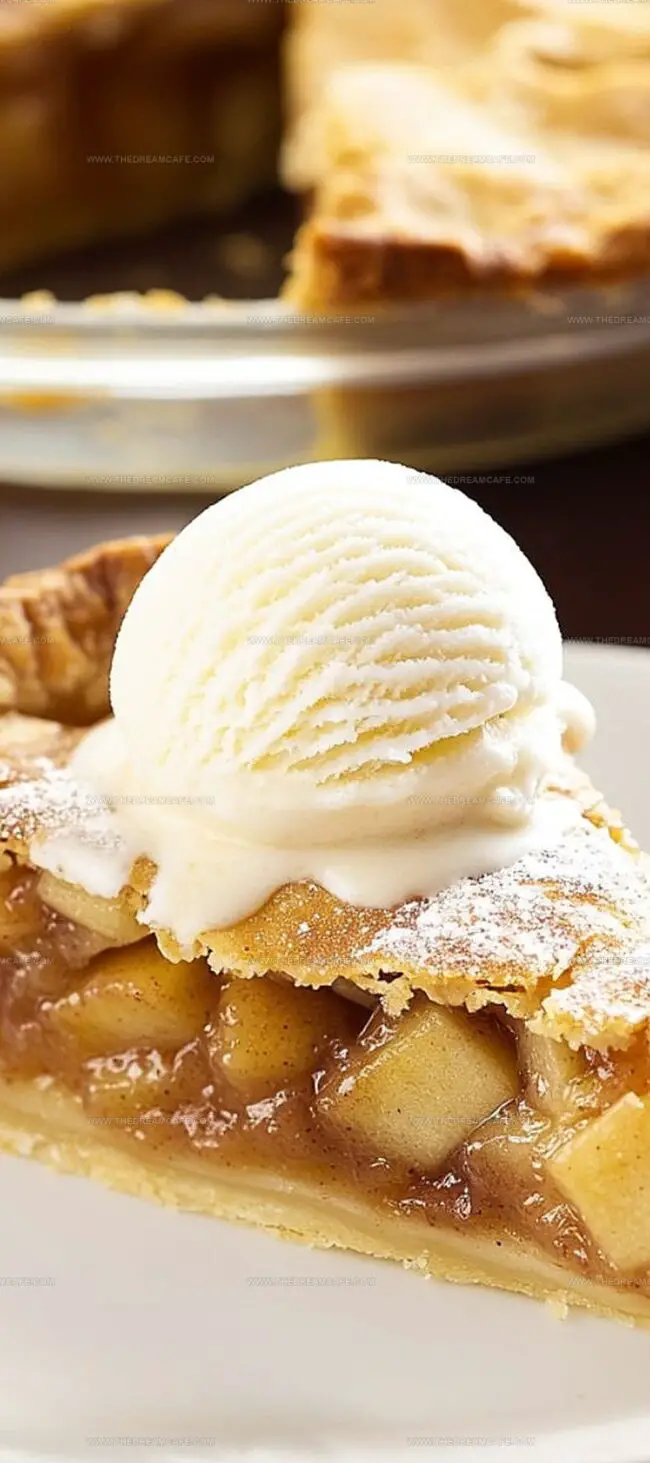
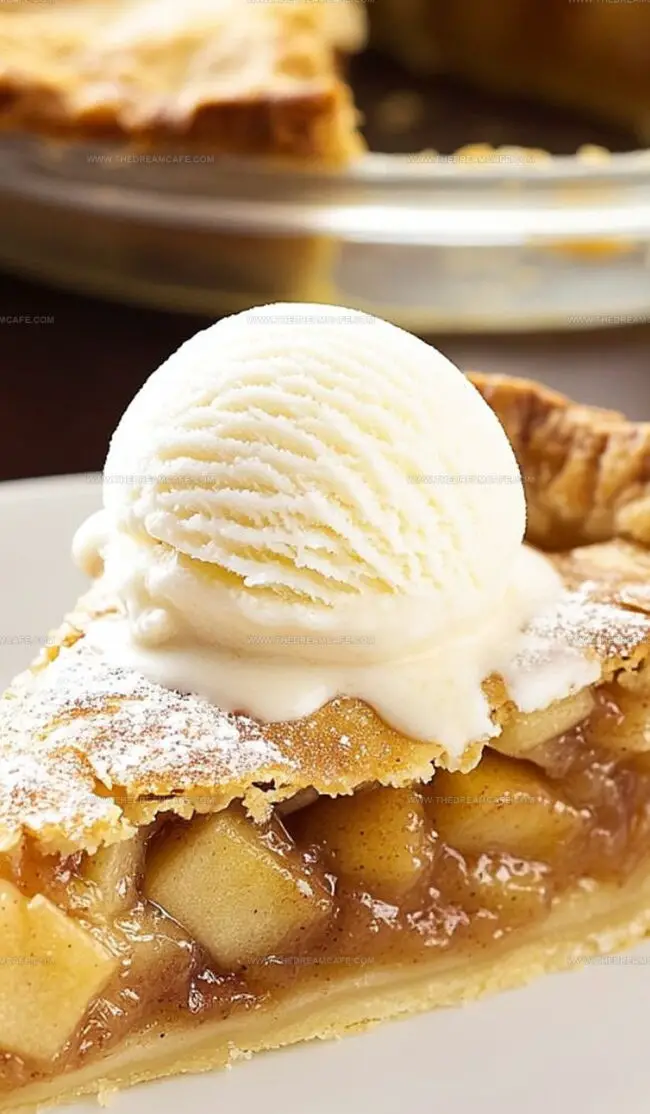
Julian Park
Co-Founder, Cuisine Researcher & Food Culture Writer
Expertise
Education
The Institute of Culinary Education (ICE), Los Angeles, CA
Julian Park is a natural storyteller at The Dream Café who blends hands-on culinary experience with a passion for exploring global food traditions. A graduate of The Institute of Culinary Education in Los Angeles, Julian combines professional technique with a love for cultural discovery, diving into how dishes reflect heritage, migration, and identity.
His work spans everything from in-depth cuisine guides to reflections on everyday meals around the world. With a curious palate and a journal always close by, Julian helps readers connect with food in a way that feels so insightful and personal.